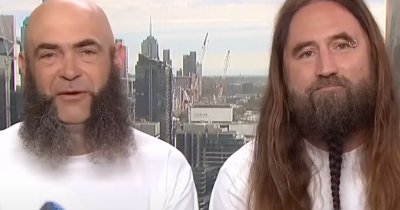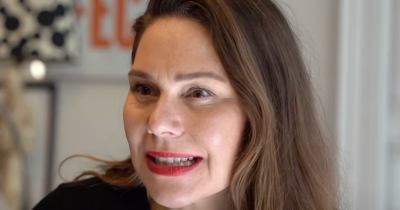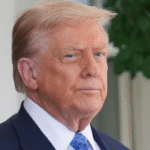By Khadija Pervez in News On 15th August 2025
Trump Orders Smithsonian The executive order signed by President Trump in March is now in place and an executive order from the White House directing the Smithsonian Institution to match its exhibits and programs in line with the White House’s preference for a particular version of American historical.
White House Directive Moves Forward
As per the Wall Street Journal (August 12) According to The Wall Street Journal (August 12), the White House sent a formal letter to Smithsonian Secretary Lonnie Bunch, outlining the changes that are expected in the wake of President Obama’s March 27 executive order, officially called “Restoring Truth and Honesty in American History.
The order claims that the Smithsonian of moving towards what Trump refers to as “divisive, race-centered ideology,” in the alleged sense of framing U.S. and Western traditions as harmful in their own way.
“Once widely respected as a symbol of American excellence and a global icon of cultural achievement, the Smithsonian Institution has, in recent years, come under the influence of a divisive, race-centered ideology,” the executive order says.




Review and Report
The latest White House letter, signed by senior associate Lindsay Halligan, instructs the Smithsonian to take down “ideologically driven” content and replace it with “unifying, historically accurate” narratives. The letter also requests an exhaustive document within a period of 30 days before any changes are made across all museums.
“This is about preserving trust in one of our most cherished institutions,” Halligan wrote, stating that Smithsonian museums must remain “accurate, patriotic, and enlightening — ensuring they remain places of learning, wonder, and national pride for generations to come.”
Smithsonian Response
In an announcement that was released, the Smithsonian has reiterated its dedication in “scholarly excellence, rigorous research, and the accurate, factual presentation of history.” Officials have confirmed that they are studying this request from President Obama and having ongoing discussions with Congress as well as members of the Board of Regents.
The institution emphasized that any changes to exhibits would be based on research and input from experts rather than pressure from politicians.
Exhibit Changes Already Visible
Some reports suggest that there are already changes in the works. On July 31st, The Washington Post made public changes to the Museum of American Heritage’s exhibition the American Presidency: A Glorious Burden.
The exhibit previously featured the impeachments. It was with a sign that read: “Case under redesign (history happens).” This label is now gone.
Smithsonian representatives stated that this impeachment reference is designed to be a temporary addition in order in order to keep current developments in mind, and that curators review regularly “legacy content.”
“In reviewing our legacy content recently, it became clear that the ‘Limits of Presidential Power’ section in The American Presidency exhibition needed to be addressed,” an official with the publication.
Broader Context
This is part of Trump’s larger campaign to change the way the history of our country is taught and presented throughout the United States. Since his return to the presidency, he has repeatedly criticised educational frameworks that stress the racial divide, colonialism and the systemic injustice.
In March the executive order outlined his administration’s policy: American history should highlight the achievements pride, strength and patriotism instead of division and guilt. Some critics, however, claim that this framing is a risk of erasing vital elements of America’s history.
Political Reaction
The reactions in Washington have been quick and differing. The advocates of the directive claim that the federal museums should promote the spirit of unity and pride rather than focus on the failures. Conservative critics claim that Smithsonian exhibits over the last few years have been disproportionately focused on race, slavery and oppression.
CNN political analyst Jilian Michaels, who is Trump’s political commentator, defended his position during an on-air debate and said: “He’s not whitewashing slavery, and you cannot tie imperialism and racism and slavery to just one race, which is pretty much what every single exhibit does.”
However, Democratic Representative Ritchie Torres fired back, accusing Michaels of “extraordinary historical revisionism.” He said that racism and slavery must be discussed in a clear manner to comprehend the development of our nation.
Scholars Raise Concerns
Teachers and historians have expressed concern about the possibility of political interference within the Smithsonian’s mission. Many have argued that the curatorial independence is crucial to the credibility of the institution.
The Dr. Anne Richards, a professor of American Studies at Georgetown University she stated: “The Smithsonian has always been admired worldwide for its curatorial and research freedoms. Political directives that determine what the future should be can undermine trust and could turn museums into tools for propaganda.”
Some experts warn that efforts to make history more accessible or less sanitized can be detrimental to understanding by the general public. “Patriotism and honesty are not mutually exclusive,” declared James Monroe, president of the American Historical Association. “Removing evidence of conflict or injustice from exhibits does not make the nation stronger — it makes it blind to its own lessons.”
Culture War Over History
The Smithsonian controversy is a reflection of the larger battle in culture about the way Americans perceive their past. State history curricula, school curriculums, standards as well as museums have become hot spots in the debate over identity as well as race and patriotism.
Trump has repeatedly criticized initiatives like the 1619 Project that reframed U.S. history around the legacy of slavery. Trump’s executive order is reminiscent of earlier calls for an “1776 Commission,” a temporary advisory body established during his first term. The commission encouraged the importance of patriotic education.
Public Reactions
Public opinion is polarized. In social networks, those who are in favor who backed this White House order praised it as a way to defend of “politically motivated narratives.” Others have accused Trump of censorship and trying to erase certain aspects of the past that cast Trump and his supporters in an unfavourable way.
The groups of activists have created petitions that call on the Smithsonian to be adamant against any influence from the political. “The integrity of America’s story is at stake,” said the non-profit American for Historical Truth Americans for Historical Truth in an announcement. “Museums should inform, not conform.”
What Comes Next
The Smithsonian is currently reviewing the White House’s demands, while operating as usual. It’s unclear how extensive changes are expected to be, or if Congress -which funds the museum — is likely to be able to intervene.
The outcome, according to some observers, will alter not only Smithsonian exhibits, but as well the larger discussion about memory, history and the notion of identity. As the review progresses the debate about who determines how America is told increasing in intensity.















